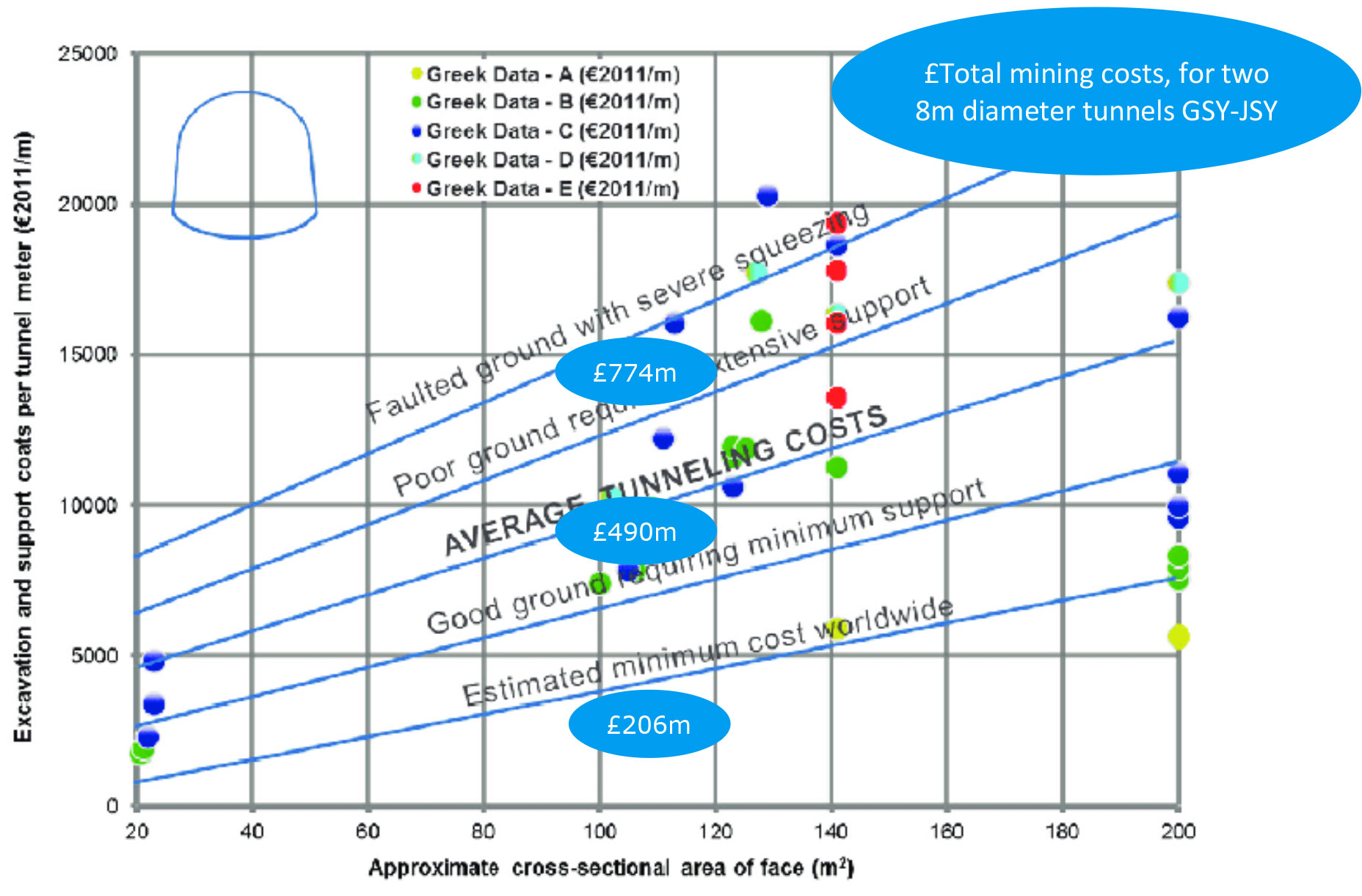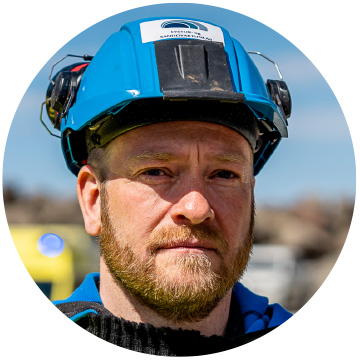What is the vision behind Connect 3 Million?
Connecting the Channel Islands to mainland France
Introduction
‘Connect 3 million’ is the working title of the project to connect 3 million people in lower Normandy to Guernsey, via Jersey, with a maximum commute time of one hour.
A fixed link between Guernsey and Jersey is more than just an infrastructure project. It is a social, economic and environmental project with the potential to transform the lives and prospects of citizens, businesses and society in the Channel Islands.
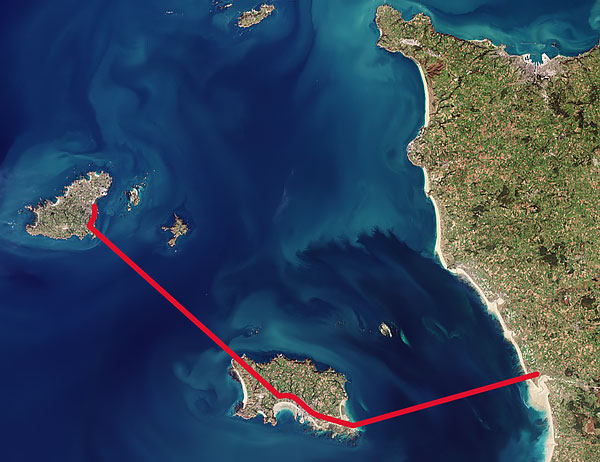
Key messages:
1. Benefits
- Establish a commuting population where there is income tax take, but no additional stress on island infrastructure.
- Enrich trade, tourism, and social cohesion between the islands.
- Double GDP, increase Government general revenue by £500m per annum in 10 years.
- Early estimate is 8,000 passenger movements a day in each direction, between Jersey and Guernsey. (Source: Ramboll.)
- DFM independently believe this is fair and for passenger movements to increase at 5%-7% a year.
- Jersey Airport to St Helier passenger movements have been excluded from revenue estimates.
- Economic benefit
- Fiscal stimulus from inward investment, and tax revenues of 10% of construction cost.
- Critical mass savings estimated at £200m a year. (Source: Chris Brock, Critical Economics.)
- Alleviate housing
- Diversify the economy
- Inward investment
2. Proposition
- Commuters will access shuttle trains from underground stations located in St Peter Port, Jersey Airport and St Helier.
- The working train specification is a 120mph Bombardier Talent battery powered train, which bridges electrified and non-electrified track sections.
- Target journey times
- St Peter Port to Jersey Airport in 7 minutes
- St Peter Port to St Helier in 15 minutes
- Timings
- Phase 1: connect Guernsey to Jersey first, due to jurisdictional similarities.
- 1 year feasibility study, 2 years to dig, 1 year to fit out.
- Consider freight and cars.
- Phase 2: connect Jersey to France
- Phase 1: connect Guernsey to Jersey first, due to jurisdictional similarities.
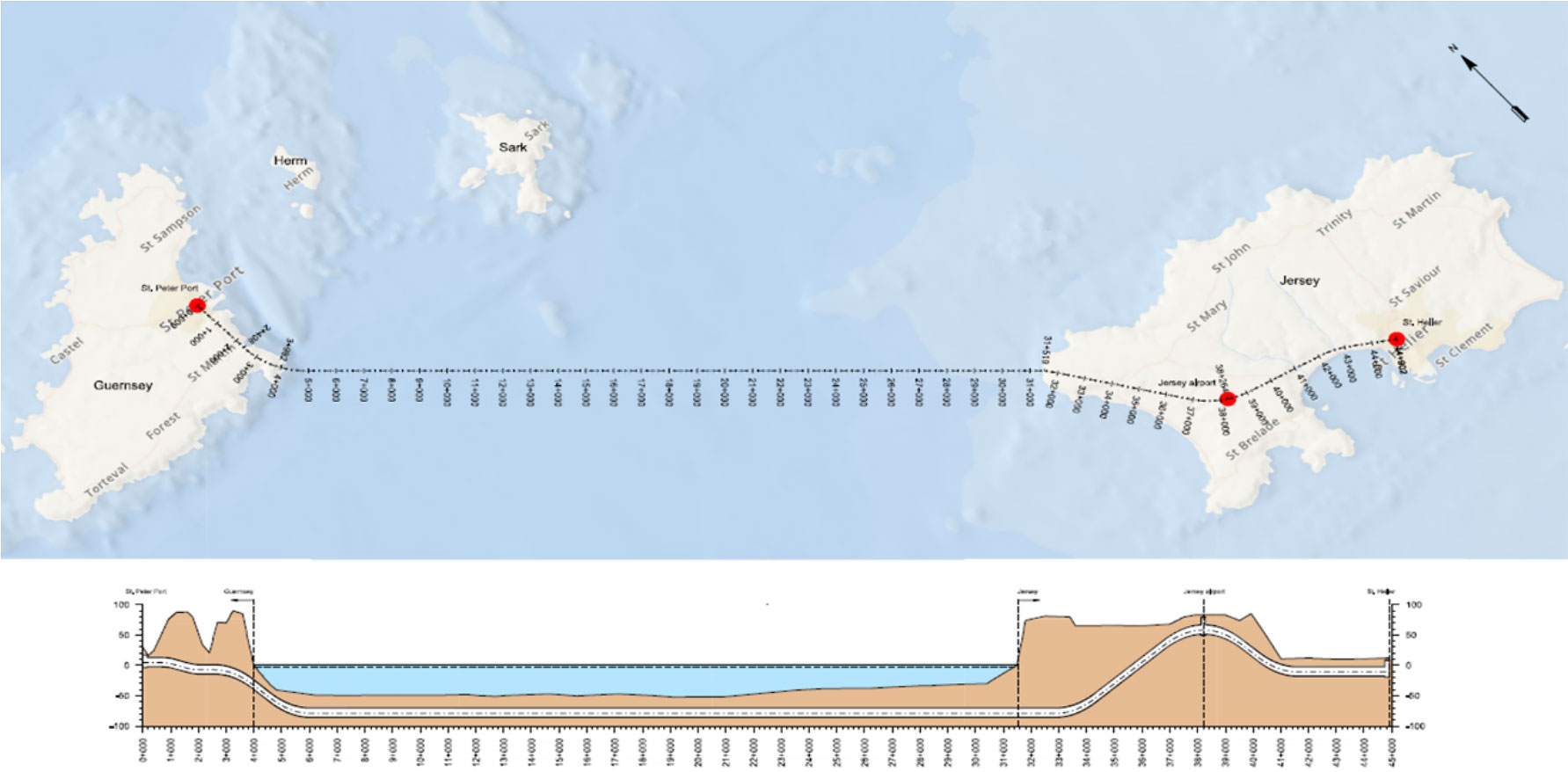
Source: Rambol
3. Government role
- Funds a feasibility study which includes passenger modelling.
- Provides a guarantee for ‘passenger volumes’, not ‘costs’.
- Invites private sector bids to build and subsequently finance.
4. Estimated costs
Build costs will depend on water voids, geology and technology used, as determined by the feasibility study.
- Tunnel Boring Machines (TBM) potentially £20m per km.
TBMs create a sealed tube as they advance through water voids. - Mining the tunnel (drilling and blasting) potentially £5m per km.
Modern drilling and blasting techniques address water voids by freezing the rock face.
Whilst drilling and blasting is the preferred solution, the geology and water management may require a TBM to be used.
Illustrative costs, including £100m each for three stations, 8,000 passenger movements a day growing at 5%:
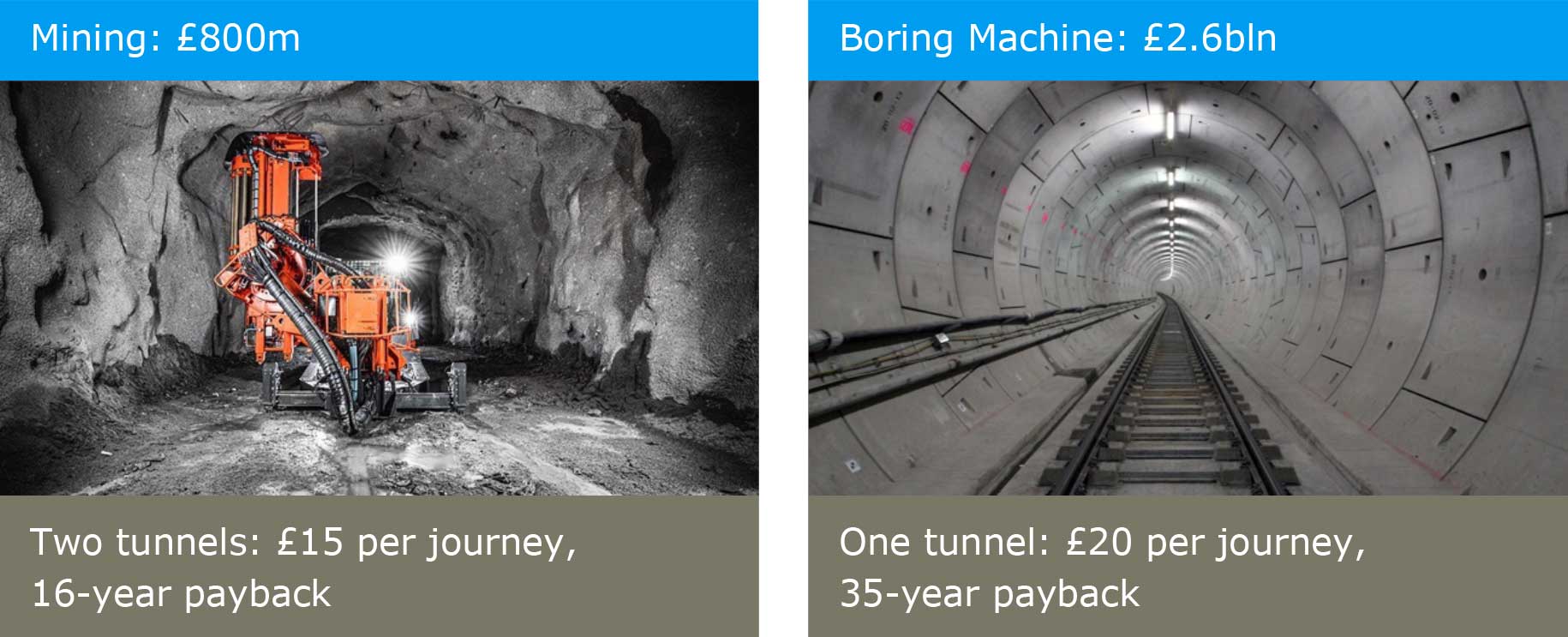
4. Next steps
DFM will finance the travel and hotel expenses for a team of experts to talk to the Governments of both Guernsey and Jersey.
The team at DFM give their thanks to the support we have received from ![]()
Appendix
Rail Link
Talent 3 train
£150m – Saves on costs of electrifying track.
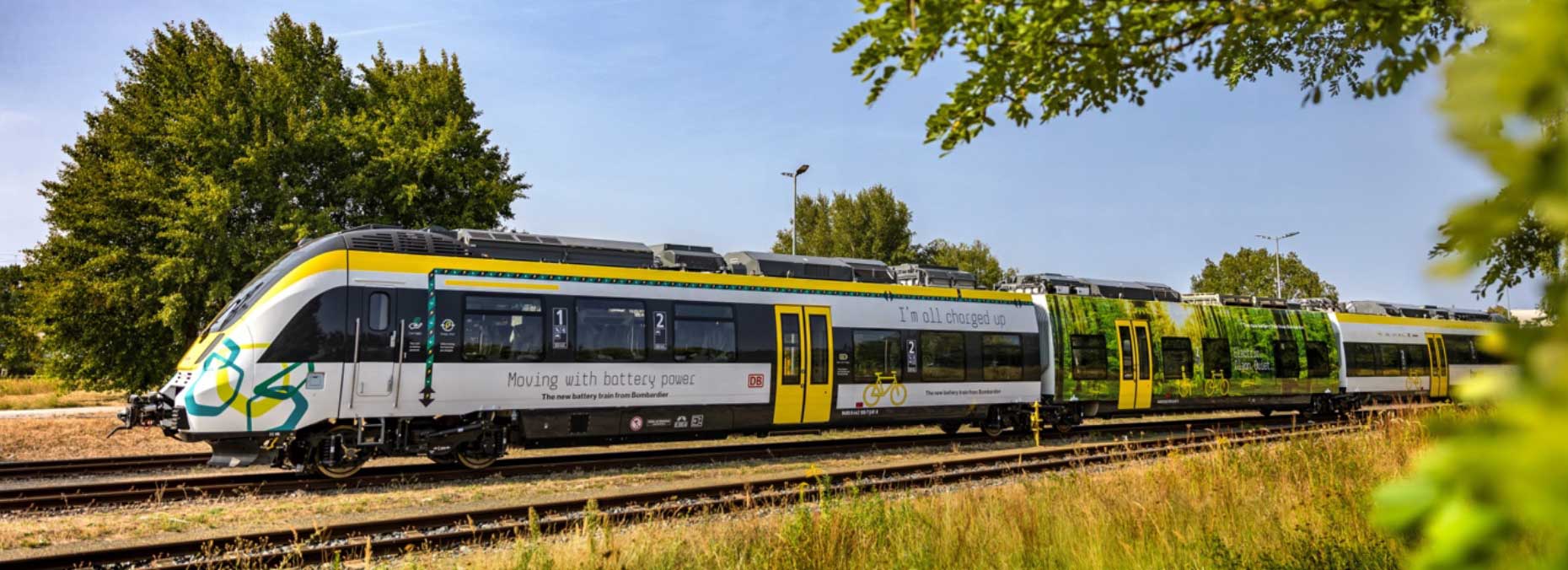
Illustrative underground station
£100m

Illustrative station entrance

Examples of other jurisdictions
Faroe Islands
10x uplift in passenger numbers compared to ferry services, with 7% growth thereafter.
The Eysturoyartunnil subsea tunnel network opened in 2020.
The tunnels were funded by a joint venture partnership between Government and private sector.
The Faroe Islands have 53,000 inhabitants and now 20 tunnels, of which three are long tunnels under the sea. Two more are already under construction, and another 14 are on the drawing board.
faroebusinessreport.com/geography/societal-game-changer-the-subsea-tunnels/
The Eysturoy Tunnel

The Eysturoy Tunnel connects both sides of the bay of Skálafjørður using two tunnels that connect to a roundabout under the seabed at mid-bay.
| Started: | 2017 |
|---|---|
| Completion date: | 2020 |
| Length: | 11.24 km |
| Lowest point: | -187 metres |
| Funding: | Toll fees |
| Cost: | £140m |
The Sandoy Tunnel
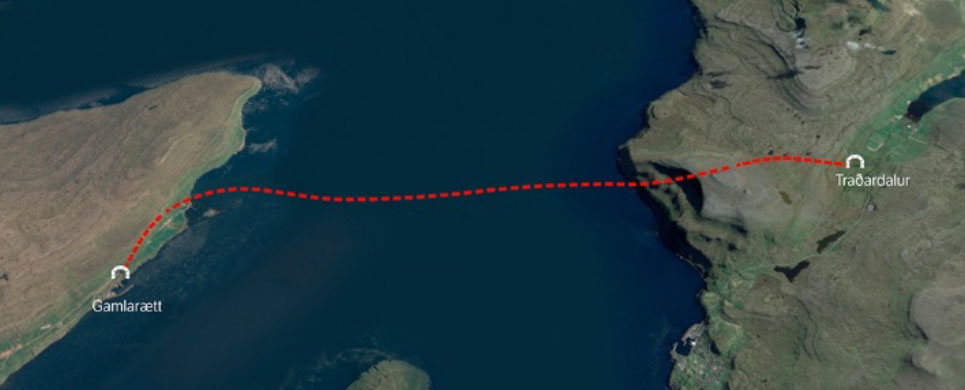
| Started: | 2018 |
|---|---|
| Completion date: | 2023 |
| Length: | 10.8 km |
| Lowest point: | -147 metres |
| Funding: | Toll fees |
| Cost: | £120m |
Suðuroyar Tunnel

Suðuroyar tunnilin, a submerged fixed-link in the Faroe Islands, will link the island of Suðuroy to Sandoy.
| Started: | 2020 |
|---|---|
| Completion date: | 2030 |
| Length: | 25 km |
| Funding: | Toll fees |
| Cost: | £400m |
Norway
Ryfast Tunnel

| Started: | 2018 |
|---|---|
| Completion date: | 2023 |
| Length: | 10.8 km |
| Lowest point: | -147 metres |
| Funding: | Toll fees |
| Cost: | £120m |
Sweden and Denmark
Øresund Bridge

Political barriers prevented the vision becoming reality for decades. The award-winning double-track railway and motorway opened in 2000, allowing 3.7 million people to live and work on either side. www.oresundbron.com
16 km road and rail link between Sweden and Denmark.
A cable-stayed bridge runs nearly 8 km (5 miles) to an artificial island where it transitions into a tunnel that runs another 4 km (2.5 miles).
The financing was funded by the Norwegian government (with the addition of toll fees)
Switzerland
Gotthard Base Tunnel
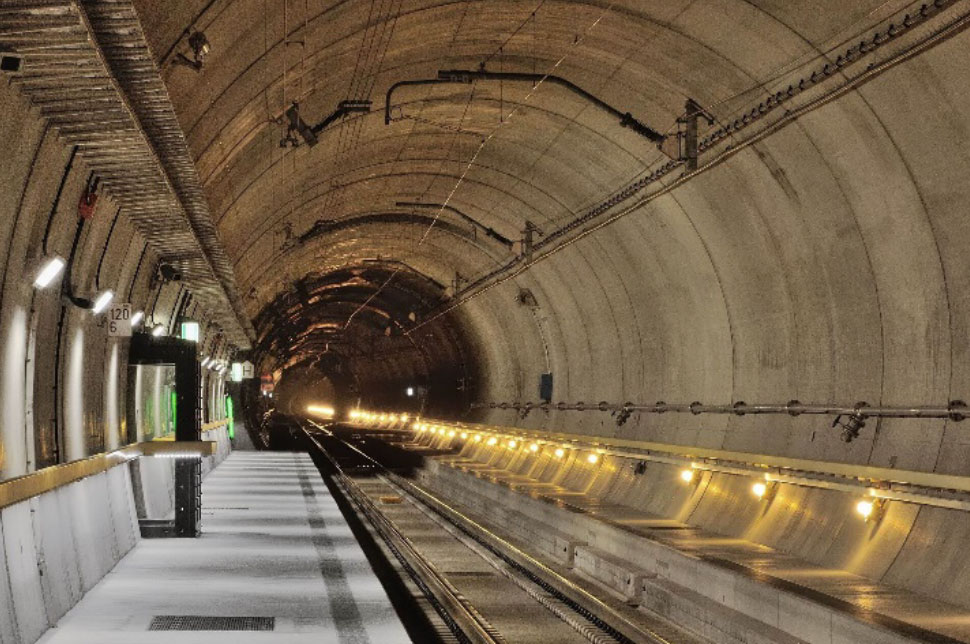
| Started: | 1999 |
|---|---|
| Completion date: | 2016 |
| Length: | 57 km |
| Depth: | 2,300 metres |
| Funding: | Toll fees |
| Cost: | £8.5bln |
Relevant cost proxies indicate a range of outcomes
Source : Ramboll
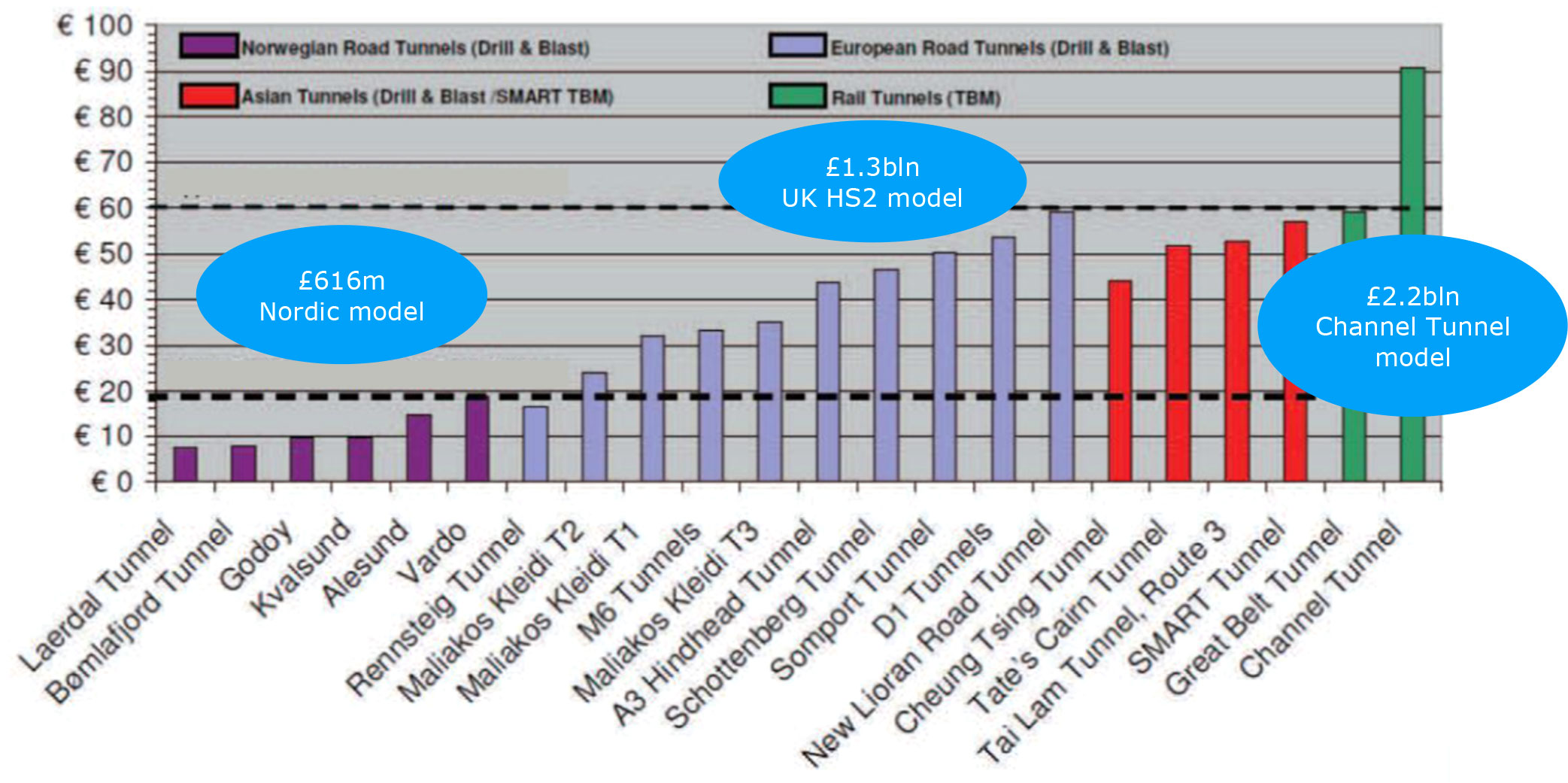
Relevant study into mining costs from Greece:
Assuming two 8m diameter tunnels are dug, indicative costs of excavation from Andreas Benardos work:
Source: Assessing and benchmarking the construction cost of tunnels Andreas Benardos School of Mining and Metallurgical Engineering, National Technical University of Athens, Athens, Greece Chrysothemis Paraskevopoulou
